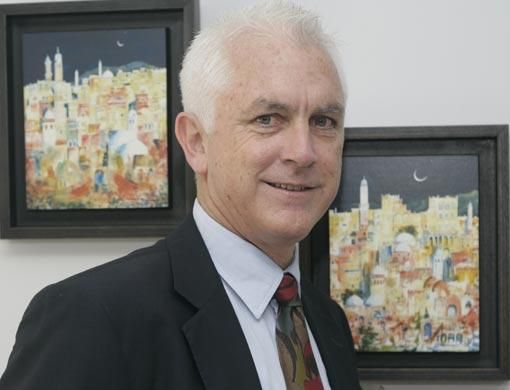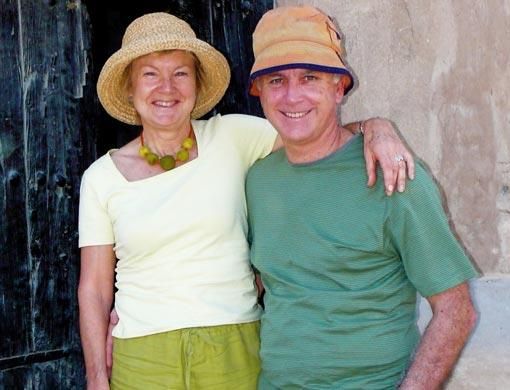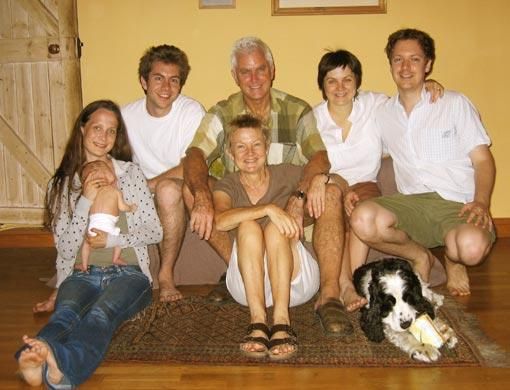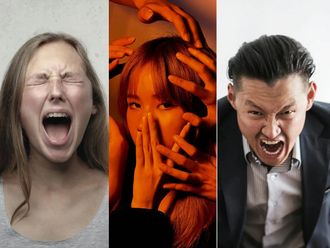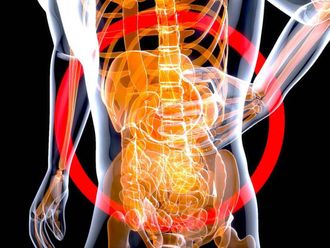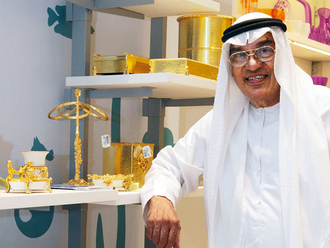Peter Lawrence's life reflects Austrian philosopher Rudolph Steiner's teachings. For he, like Rudolph, believes a balanced human being needs to embrace both arts and science.
Rudolph also postulated that humans pass through distinct seven-year cycles – from birth into middle and old age. Gail Sheehy, American writer and lecturer, in her book Passages concluded that people pass through passages of about seven years of stability before needing to accept a change of some kind.
Peter says he finds similar parallels in his life. His wife Lis and he have keen interest in philosophy, and have taken to Steiner's philosophy, which is known as Anthroposophy.
After his first 21 years, which he calls the willing, feeling and thinking phases of life, Peter worked for about seven years in the UK gaining his professional status as a civil engineer.
Around this time he began to work as a project manager on Middle Eastern projects before the urge for something new led him to move his family to Saudi Arabia for another seven-year period.
When work circumstances forced a change, he and Lis moved back to the UK where they enrolled their children, Rachel and Nick in the Anthroposophy-based Steiner/Waldorf School.
For the next 19 years the family stayed in the UK while Peter worked in the international division at the environmental engineering firm, Montgomery, Watson and Harza (MWH).
He spent another seven years focusing on European-funded work out of Brussels and another seven promoting his passion for natural, non-energy consuming methods of treating wastewater with reed beds.
A highlight of this time was winning a consultancy to monitor the performance of the EC's (European Community) funding into Eastern Europe, known as the PHARE programme.
It was one of the EU's largest consultancies ever awarded. Peter then focused on the Middle East to develop MWH's Jordanian and Eastern Mediterranean businesses.
Peter and Lis moved to Dubai in 2003.
He is now in the fifth of what is likely to be seven years as regional business development director in the Middle East for MWH. In his role he assists business units across the region in their pursuit of commercial opportunities and implementation of MWH's regional strategy.
Peter enjoys the diversity and challenges of the region. He explores history and culture during travels.
In his spare time he finds balance by painting; he recently co-authored Al Khaleej and Beyond – Reflections of Two Artists.
I
I had a simple upbringing in east London when the UK was still recovering from the ravages of the Second World War. I still recall the excitement of getting a television – a 10-inch black-and-white model so
we could watch the coronation in 1953.
A few years later my grandparents helped us buy our first family car so we could continue to meet regularly.
I had a fairly good standard of education at primary schools. I remember singing in school choirs; it was a happy time.
I went to one of the area's best secondary schools, Sir George Monoux Grammar School. However, I'll never forget the feeling of loss when the education system required me to choose between arts or sciences.
I chose the scientific route because it felt like the sort of thing a boy should do. I became a scientist and engineer and buried my artistic side.
It was this sense of loss that made me agree with Lis that a Steiner/Waldorf education was the right route for our children.
I went on to Nottingham University to learn civil engineering. It proved to be the most enjoyable three years of my life.
I had the freedom and time to develop my thinking and ideals. I began to examine different philosophies and religions, and
listen to a much wider perspective than the relatively narrow upbringing that I had.
My closest friends outside engineering were interested in classical music and arts and I was introduced to Wagnerian opera; I love it to this day. I also developed a taste for choral music, which led to my singing in various choirs
later in life, including the Dubai Chamber Choir.
I met Lis in the last term of my final year at university. Two years later we married. When our first child Rachel was 18 months old, I was offered a senior position as a project manager and resident engineer on a large project in the Assir province of Saudi Arabia.
The project was to provide sewage treatment and stormwater protection to the city of Khamis Mushait. I was young, and the challenge was somewhat daunting.
Nick was born after two years in Saudi Arabia and smiled his way through the next 20 years before he departed for university. Rachel was a great sister to him and took her responsibility as elder sibling seriously.
They have remained the best of friends. I enjoy my granddaughter Emily's smiles and hugs. She calls me Grumps because of my reluctance to be labelled a grandfather.
I recall my first Middle Eastern visit to Bahrain in 1975. I had just completed my post-graduate training to become a chartered engineer and was appointed project manager for a new sewerage project in Bahrain by one of MWH's founding companies, Watson Hawksley.
I was so excited, because this was the longest plane journey I'd ever made and it was to a seemingly exotic part of the world.
I went to live in Saudi Arabia two years later in the south-eastern corner of Assir province and was based in Khamis Mushait. It was the start of a seven-year adventure that included Jubail and Jeddah.
I spent long spells without my family during my stay in Jubail, and it was during these leisure hours that I took an interest in painting. Published artists like David Howell, Spencer Tart and Murray Zanoni were a great inspiration with their interpretations of Jeddah and the region.
I joined DIAC (Dubai International Art Centre) after relocating to Dubai. Through DIAC I was given my first chance for a solo exhibition at Arabian Ranches in 2004.
I was a founder member of Artisans of the Emirates (ARTE), which has provided a monthly venue to exhibit and sell my paintings. I've since been approached by interior designers and a series of my prints have been used throughout the new Lords Hotel in Sharjah.
Me.
Me and my Greek Reed Bed Project
I joined MWH because of its focus on environmental issues and communities. In my enjoyable career with MWH, the most satisfying project was one that demonstrated the practical use of natural reed beds for treating domestic sewage in Greece.
I developed a passion for constructed wetlands as a method of treating wastewater. They use almost zero energy to achieve the necessary degree of treatment.
When my children got involved in charity work through their school, I learnt about Camphill Trust, which supports mentally challenged people. At one of their villages, Oaklands Park, I met a German worker called Uwe Burka.
He had a passionate interest in natural methods of wastewater treatment, and had designed and built a reed bed to serve their community in rural England. Though he designed the plant to be part of a landscaped garden, it captured Prince Charles' interest, who engaged Camphill Water to design one for his residence, Highgrove House.
Uwe became an essential part of our team for the Greek project, which was on a much larger scale to serve village communities of 3,000 people. The project was a great success and attracted a lot of interest – and in so doing raised the profile of MWH.
Me, MWH and travelling
I had a thirst for travel and could never settle in the UK utility industry. MWH gave me that opportunity.
My career with MWH has taken me from Turkey and Egypt through all the GCC countries and Iran. If I had to select favourites they would include Jordan for its amazing history and Yemen for its magical architecture.
Of course, I can't forget Oman with its mountains, lush wadis, superb beaches and reefs, and picturesque villages.
MWH has changed from a 300-strong UK environmental consulting company to a global leader in water, waste and environment that employs over 7,000 people.
Me and my paintings
I had always liked watercolours, but with the blinkered educational system of my youth, I couldn't combine painting with science. Living in Saudi Arabia gave me a chance to experiment. I learnt techniques and styles from a few books.
I produced a handful of paintings of the dramatic Assir province, Old Jeddah and a series of Arab doors.
When I turned 50, Lis presented me with a weekend art course. I went on to train with several other British artists, including a most inspiring two-week visit to Corfu with Wendy Jelbert.
Me and my book
I had collected a substantial electronic portfolio of my paintings and felt that I had enough material to publish, but didn't really know how.
I had become friends with Mike Shepley after sharing the DIAC watercolour challenge experience in 2005 and 2006. I learnt he was involved in publishing and filming.
I began to appreciate his lively anecdotal company and his unique style of watercolour painting, slightly wild, like his personality. Mike and I decided to pursue the idea of joint book in 2007.
Within three weeks we had a vague notion of a book of paintings, photographs and video clips supported by anecdotes from our combined 50-plus years in the region. It was a surprise when MWH agreed to sponsor our non-technical book.
The concept became reality, and Mike and I concentrated on producing enough paintings for a storyline across the Middle East region. It was a frantic period of research and hard work to produce and align our material into a coherent storyline.
I still can't quite believe that by mid-November 2007, after a working period of about seven months, we had our book published and launched at a colourful event to celebrate MWH's 60 years in the Middle East.
Myself
Why did you choose to work for MWH?
I've been able to take my commitment to long-term quality of life and environmental issues further at MWH. People choose to work for MWH in the field of Environmental Engineering because we aspire to create a sustainable future for this planet. Our motto – building a better world – is embedded in everything we do.
We are committed to reduce our carbon emissions by 15 per cent – an ambitious goal for a global company. But we have analysed, measured and devised strategies to achieve it.
We are adopting ways to make our air travel more sustainable. We've made a $1.5 million capital investment to improve our video conferencing capabilities.
We have recently moved one of our key global meetings from Singapore to Orlando, Florida – a decision that reduced our travel-related carbon emissions for the annual event by as much as 40 per cent because many of the attendees were based in the US.
We also examined where we worked and the materials we specified for our projects. We have set stringent, uniform guidelines for our supply-chain managers to follow. We began using more environment-friendly materials.
And as our company grows and we need more space, we have adopted a policy to sign leases only in buildings that are certified under the federal LEED programme. We have more to do to get our own house in order, but we think this is a good start.
We've also developed a worldwide programme for middle-school students to educate them about the water cycle, energy use and climate change.
The programme has been translated into three languages, and we expect to roll it out to 150 classrooms by the end of 2008.
- For more info e-mail peter.lawrence@mwhglobal.com
Preethi Janice D'Sa is an Abu Dhabi-based freelancer


